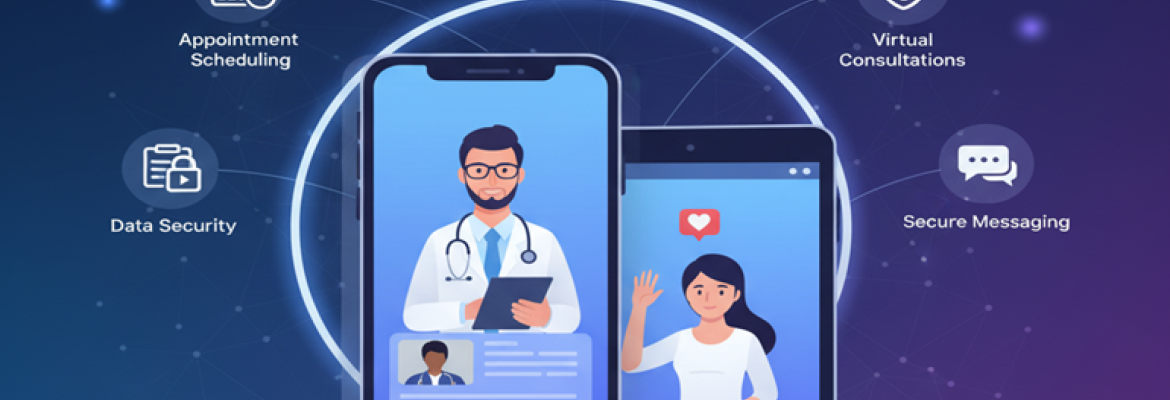
Telemedicine Platform Development: Essential Features and Security
Telemedicine has completely changed how we think about going to the doctor. Instead of taking time off work and sitting in a waiting room, patients can now get quality medical care from the comfort of their own homes. This shift isn't just a temporary trend; it's the new standard for convenient and accessible healthcare.
But creating a telemedicine platform that people trust and want to use is about more than just setting up a video call. It's about building a secure, reliable, and user-friendly experience that works for both patients and doctors. A great platform needs to have the right features to make virtual care seamless, and it must be built on a foundation of security to protect sensitive health information.
If you're looking to build a telemedicine platform, this guide is for you. We'll walk through the essential features you need to include and the critical security measures you can't afford to ignore.
The Must-Have Features for Any Great Telemedicine Platform
To create a platform that truly serves its users, you need a solid set of core features. These are the non-negotiables that form the backbone of any successful telemedicine service.
- Simple Patient Profiles: The journey should start with an easy way for patients to sign up and create a profile. This is where they can share their medical history, list allergies, and keep track of past consultations. A clear and complete profile helps doctors get up to speed quickly and provide more personalized care.
- Easy Appointment Scheduling: Nobody likes playing phone tag to book an appointment. A good telemedicine platform should have a simple, intuitive scheduling system. Patients should be able to see a doctor's availability and book a virtual visit in just a few clicks. Automatic reminders sent via text or email are also key to reducing no-shows and keeping everyone on the same page.
- High-Quality Video Calls: The heart of any telemedicine service is the video consultation itself. The video and audio need to be crystal clear and reliable, even if the user doesn't have the fastest internet connection. This ensures that doctors can make accurate assessments and that patients feel seen and heard. A good system should also allow for things like screen sharing, so doctors can easily show patients test results or educational materials.
- Secure Messaging: Not every conversation needs a full video call. A secure messaging feature allows patients and doctors to communicate for quick follow-up questions or to share information without needing to schedule another appointment. It's a convenient way to stay connected, but it's crucial that this messaging is fully encrypted to protect privacy.
- E-Prescribing: One of the biggest conveniences of telemedicine is the ability to get a prescription without leaving home. Your platform must have a feature that lets doctors send prescriptions directly to the patient's preferred pharmacy. This streamlines the entire process and makes it easier for patients to get the medication they need.
- Seamless Payment Processing: A smooth payment system is essential for a good user experience. The platform should be able to handle insurance information, copayments, and direct payments securely and efficiently.
Security: The Foundation of Trust in Telemedicine
When you're dealing with personal health information, security isn't just a feature—it's everything. Patients need to feel confident that their most private data is safe. Building a telemedicine platform without a rock-solid security plan is like building a house with no locks on the doors.
Here’s what you need to focus on:
- HIPAA Compliance is a Must: In the United States, all telemedicine platforms must be compliant with the Health Insurance Portability and Accountability Act (HIPAA). This is the law that sets the standards for protecting patient health information. Being HIPAA compliant means having strict technical, physical, and administrative safeguards in place. This includes everything from how you store data to how you train your staff.
- End-to-End Encryption: Every piece of data on your platform, whether it's a video call, a chat message, or a patient's medical record, must be encrypted from end to end. This means the information is scrambled the moment it leaves the sender's device and can only be unscrambled by the intended recipient. Even if a hacker managed to intercept the data, it would be completely unreadable to them.
- Secure Data Storage: You need to have a clear plan for how and where you will store patient data. This involves using secure servers and databases that are protected against unauthorized access. You also need to control who can access this data, ensuring that only people with the right permissions can view it.
- Controlling Access: Not everyone on your team needs to see all patient information. Your platform should allow you to set different levels of access for different roles. A billing specialist, for example, shouldn't have access to detailed clinical notes. This principle of "minimum necessary" access is a key part of keeping data safe.
Looking to the Future of Virtual Care
The world of telemedicine is always evolving. New technologies like artificial intelligence and remote monitoring devices are making virtual care even more powerful. AI-powered chatbots can help patients check their symptoms before talking to a doctor, and wearable devices can send real-time health data to providers, allowing them to monitor chronic conditions from afar.
By focusing on a strong set of core features and an unwavering commitment to security, you can build a telemedicine platform that not only meets the needs of today's patients but is also ready for the future of healthcare.
